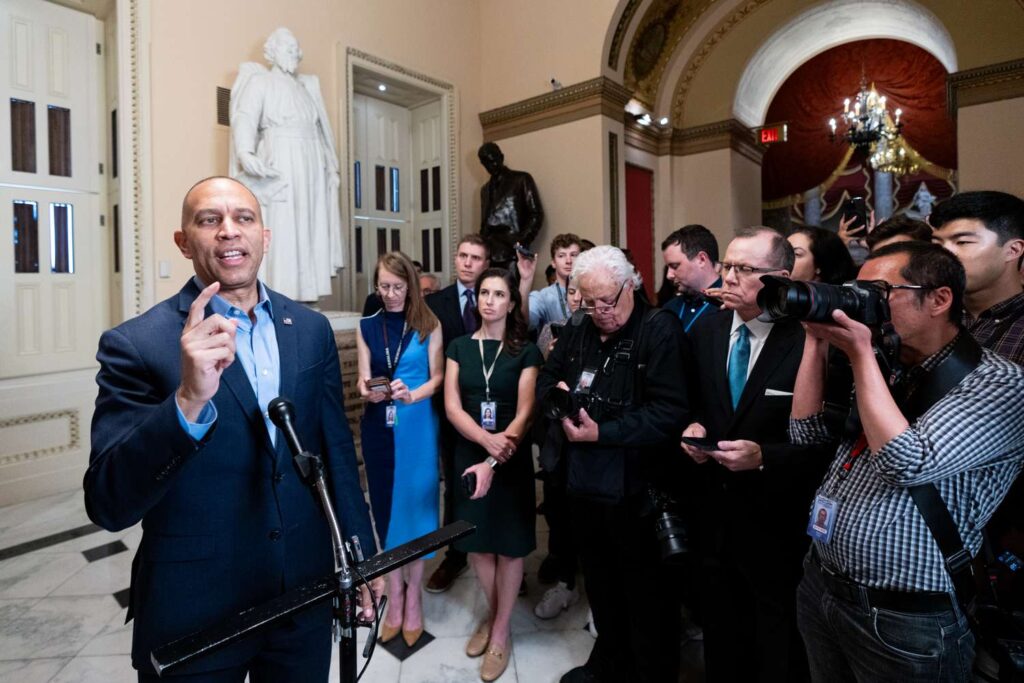:max_bytes(150000):strip_icc():format(jpeg)/GettyImages-2236784032-4c34f8d2673544b58bb0e3982e162a71.jpg)
KEY TAKEAWAYS
- The federal government will likely shut down, pausing many non-essential government functions, if Democrats and Republicans fail to agree on a plan to extend funding before Wednesday.
- Essential functions, like Social Security and Medicare benefits, will continue, but you will likely see delays in some government functions.
- The White House has threatened mass layoffs if the government shuts down, raising the stakes for federal workers.
The federal government is approaching a shutdown that would suspend many federal agencies and workers, and delay some government functions.
President Donald Trump met with Congressional leaders on Monday in a bid to negotiate a funding bill before the government shuts down on Oct. 1, as reported by several outlets. Democrats have demanded that cuts to healthcare programs be reversed, while Republicans have proposed another continuing resolution to keep the government running.
Here’s how the ongoing battles could affect Americans—including federal workers and those who count on services like Social Security and Medicare.
Why This Matters to You
The federal government is responsible for funding services used by millions of U.S. residents, including Social Security and Medicare. While those programs will continue to function, a government shutdown can disrupt federal services that many take for granted.
Reversal of Federal Healthcare Cuts Could Make Health Insurance Cheaper For You
Many Democrats say they will not approve a government budget unless it reverses some Medicaid funding cuts and extends Affordable Healthcare Act health insurance tax credits.
The Medicaid funding cuts from the “One Big Beautiful Bill” would exclude 8.6 million Americans from the federal healthcare program over the next decade. Beginning in 2027, the cuts include new requirements that will restrict immigrants from the program and require able-bodied adults to work at least 80 hours a month or be in school.
The enhanced tax credits, which were included in former President Joe Biden’s 2021 American Rescue Plan Act, made premiums for Affordable Care Act health insurance more affordable. Next year, health insurance prices are expected to rise, and if the tax credits are not extended, Americans will pay more for their health insurance.
A 49-year-old couple with a 19-year-old child who makes a combined $90,000 a year will have to pay $2,718 more on their healthcare premiums next year without the enhanced tax credits, according to a recent analysis by KFF, a nonpartisan healthcare research organization.
Permanently extending the credits would mean 3.8 million more Americans would have health insurance by 2035, according to the nonpartisan Congressional Budget Office, but would increase the deficit by $350 billion.
Some Federal Functions Will Be Suspended
In what’s technically called a “partial” shutdown, essential functions will continue, but you may have trouble contacting the government and getting paperwork processed.
Many employees will be furloughed or have to work without pay during a shutdown. Social Security checks, however, will still be sent out, and Medicare and Medicaid will still cover healthcare costs.
Which Government Functions Will Be Affected by a Shutdown
What Will Continue
-
Medicare, Medicaid and Social Security payments
-
Mail delivery by the U.S. Postal Service
-
Veteran benefits and VA loans
-
Most IRS operations
-
Law and immigration enforcement
-
SNAP and EBT benefits, but these could be paused if the shutdown lasts several weeks
-
Passport application processing
What Will Be Stalled
-
Small Business Administration issuance of loans
-
Some mortgage approvals will be delayed under FHA, HUD and USDA
-
National Parks could be closed
-
TSA and Air Traffic Controllers must work without pay, so air travel may be disrupted
Although essential functions will continue, you will likely experience delays when dealing with many all federal agencies.
Federal Workers Will Be Suspended or Even Laid Off
Federal workers may have to go some time without a paycheck. The hit to federal workers could be more severe in this shutdown, with the White House threatening layoffs.
During the last partial shutdown, which occurred during Trump’s first term, about 380,000 federal workers were furloughed, and 420,000 worked without pay, as estimated by the American Federation of Government Employees. This year, that number will likely be lower due to the federal government’s mass layoffs overseen by the Department of Government Efficiency (DOGE).
The White House last week told federal agencies to prepare for mass firings of employees who are not legally required to work, as reported by Politico and other news outlets. White House Press Secretary Karoline Leavitt told reporters on Monday that the layoffs would happen unless “Democrats vote to keep the government open.”


